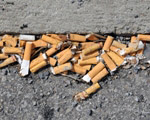The Natural Resources Conservation Service program expects 75,000 more acres expected to be enrolled in Wetlands Reserve Program.
Mayor Nutter signs bill requiring energy efficient reflective roofs or green roofs on all new no- and low-slope roofs in the city.
Both EPA and MassDEP say enforcement actions have removed 10,000 gallons per day of sewage from storm drains.
Texas Lehigh Cement Company, Oncor Electric, and Phoenix Commotion earn the Texas Environmental Excellence Award for 2010.
Energy conservation grants helped to fund upgrade, including an aeration blower retrofit.
A U.S. Green Building Council legal analysis points to existing programs that the Obama administration could use to enhance efficiency in buildings and homes.
South Shore Charter Public School won a hybrid school bus, a green audit, and money for scholarship and class supplies.
Clean Vessel Act grants help marinas manage wastes and protect recreational waterways.
Pyrolysis converts the solid, non-biodegradable plastic into a gas, which is then burned with oxidants to generate heat and steam.

Extracts of cigarette butts in water protected steel that is widely used in the oil industry from rusting, even under harsh conditions.
After 12 months, researchers demonstrated substantial decomposition of pretreated plastic and no release of bisphenol A.
The collaboration will provide up to $3.9 million over the next five years to help farms overcome obstacles preventing them from recovering and using biogas.

National Academy of Sciences' cost accounting report reveals hidden costs, says solar and wind are competitive energy sources.
By Dec. 31, EPA will establish the Chesapeake Bay TMDL, which will be the largest and most complex ever developed in the nation.
Microbiologist Walter Mulbry's scrubber raceways collected 60 to 90 percent of the nitrogen and 70 to 100 percent of phosphorus from manure effluents.
EPA awards nearly $2.5 million for the commercialization of ingenious technologies through the Small Business Innovation Research program.